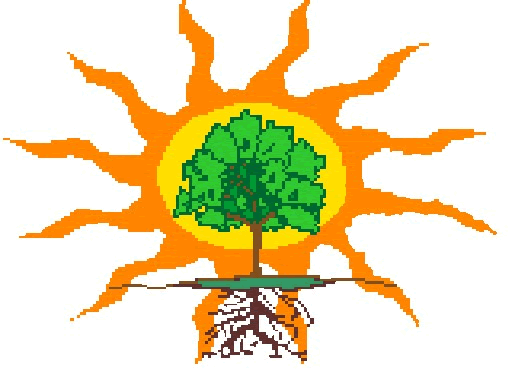
Aspen Springs Herbs
"Where Nurture Meets Nature"
Home
Herbal Therapy
TCM/Ayurveda Comparison
Ayurveda
Herbal Balm / Salve
NAET Allergy Therapy
Iridology
Photo Gallery
Articles
Contact Us
|
|
|
The ancient East Indian medical system of Ayurveda, or "life science", like Traditional Chinese Medicine, sees the primary cause of disease as going against nature. We get out of tune with nature by overworking, eating the wrong foods, missing sleep and engaging in other lifestyle choices that are not life supporting, such as smoking and drinking excessive alcohol and/or coffee. In addition, over stimulating and stressful experiences also contribute to depletion of our vital energy, thus lowering the immune system while causing digestive disorders, degenerative diseases, nervous disorders and premature aging. According to Ayurveda, the disease process can be summarized very simply by saying that the humors or doshas (Vata, Pitta and Kapha) are increased by aggravating factors (diet, climate, seasons, lifestyle, emotions, etc.), which cause weakening of the digestive fire (agni), allowing ama (undigested food masses) to arise. The increased humor and ama create blockages of the channels, and the ama becomes deposited in any weakened site in the body, where disease manifests. Individual constitution is acquired at birth (Prakriti), and remains constant throughout life. While there are three main doshas, Vata, Pitta, and Kapha, combinations and variations of these can also exist, which indicate typical conditions and tendencies towards excess. To treat a person, it is necessary to know the unique constitution of the person, as well as the specific nature of the disease (vitiation). The same disease can occur in different doshas and must be treated differently. On the other hand, the same constitutional problem, or the same aggravated dosha, may give rise to various diseases and all can be treated in the same way, by decreasing the aggravated dosha. Each dosha has a specific quantity (pramana), quality (guna) and karma (action) in the body. In its undisturbed state, it is said to be normal (absence of disease), while foods, habits and environmental factors that are contrary to the qualities of a specific dosha decrease it, just as foods, habits and environmental factors that are similar, increase it. It is increase that causes major disturbances of the doshas. * Please note: The following description is general only, and not every characteristic listed will apply to everyone with this predominant dosha. The Vata dosha is creative, active, alert and restless. This constitution is most prone to stress but anyone can acquire Vata symptoms. Vatas have strong emotions that are quick to pass. They are active and engaged, but tire easily. They are quick learners, but may forget easily, and they can be attracted to maladaptive or destructive behaviors. Cold windy weather, lack of regular daily habits, fatigue, prolonged worry, anxiety and excessive fasting can increase Vata symptoms. Vata imbalances manifest in the form of insomnia, anxiety or fear, hyperactivity, overtalkativeness, heart palpitations, constipation and diarrhea (alternating), flatulence, nervous stomach, feeling cold easily, feeling dizzy, and high blood pressure. Since Vata is the "king of doshas", balancing it is a prime requirement for everyone. The key to balancing Vata is regularity. When things change too much, their tendencies toward excitement and thriving on variety turns to exhaustion, and they may become nervous and frazzled. Other Vata symptoms may include fidgeting, ungroundedness, negativeness, worrying excessively about their condition, being hesitant, confusion, grief, sadness, insecurity, lack of integrity, loss of creativity, lack of communication, and moodiness. The following strategies for Vata conditions are: [ Follow the Vata pacifying diet, concentrating on the tastes sweet , sour and pungent . Eat warm, nourishing and easy to digest food, use ghee or butter on vegetables (preferably cooked lightly) and whole grains. Some meat is fine. Eat sweet juicy fruit, avoiding dry fruit and apples. Use warming spices such as ginger, garlic or cinnamon. Drink warm milk with a teaspoon of poppy seeds or a pinch of cardamom or nutmeg, especially at bedtime.
PITTA * Please note: The following description is general only, and not every characteristic listed will apply to everyone with this predominant dosha. Pitta people have quick and powerful intuition, judgement and intellect, but they may be critical, skeptical, authoritative or fanatical. Typical Pitta characteristics include irritability, feeling heat in the body, skin rashes, eye irritation, burning in the rectal area, stomach acid or heartburn, and intolerance to heat. Moderation, coolness, leisure, meditation, pitta-pacifying diet, natural beauty, balance of rest and activity, calm and pleasant surroundings, and decreased stimulants are needed to balance this dosha. Workaholics are usually out-of-balance Pittas, and moderation is crucial. Their fiery nature is seen in their drive, aggression and energy, and abuse may burn them up, as they become irritable and compulsive. The following suggestions will prevent and relieve the Pitta dosha:
* Please note: The following description is general only, and not every characteristic listed will apply to everyone with this predominant dosha. The more naturally relaxed, "laid-back" Kaphas make them more resistant to stressful events than the hyperactive Vata or the fiery Pitta. They are generally slower to react, display forbearance, steadiness of mind and have a powerful long-term memory. In a state of imbalance, however, Kaphas tend to be prone to weight gain, mucus accumulation, edema, boredom, self-indulgence, sentimentality, carelessness, feeling lack of support or love, and lack of interest. Kapha increases due to a combination of eating too much, consuming too many oily and/or sweet foods, and lack of exercise. The person tends to lose motivation and the couch potato syndrome may develop, along with depression and possessiveness. Kaphas may need extra motivation, time and patience to implement healing. They require stimulation, regular exercise, attention to weight control, a variety of experiences, warmth and dryness, reduced sweetness, dry massage and adherence to a Kapha-pacifying diet, emphasizing the tastes bitter , astringent and pungent . The key to balancing Kapha is stimulation to reduce lethargy and to speed up their slow digestive process. The following is a list of Kapha-reducing techniques:
The first three states of disease are invisible, and can be either in the body or the mind, while the last two stages are symptoms that can be detected by the patient and the health practitioner. 1. Accumulation - the build-up of one or more dosha. 2. Aggravation - the excess dosha accumulates and spreads outside its normal boundaries. 3. Dissemination - the dosha moves throughout the body. 4. Localization - the wandering dosha settles where it doesn't belong. 5. Manifestation - physical symptoms appear where it as localized. 6. Disruption - a full-blown disease develops. Return to TOP |

